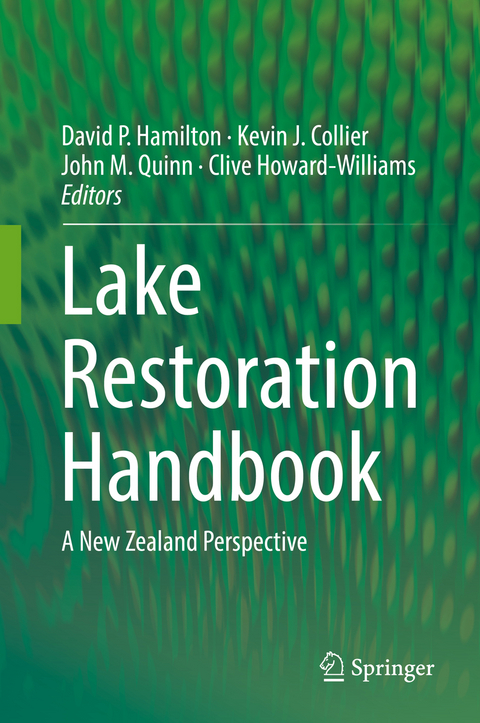
Lake Restoration Handbook
Springer International Publishing (Verlag)
978-3-319-93042-8 (ISBN)
David Hamilton is Deputy Directory at the Australian Rivers Institute at Griffith University. He held the Bay of Plenty Chair in Lake Restoration at the University of Waikato, New Zealand for 15 years and led a major lake restoration programme designed to provide the underpinning research to address algal blooms and incursions of invasive fish. This programme provided the impetus for the current book. Hamilton is an associated editor on two international journals and has led several special issues of scientific journals. He has also held a position at the University of Western Australia where he developed and applied models of lake water quality. Kevin Collier is a freshwater ecologist at the University of Waikato who has worked across the science-management interface for over 30 years. He has previously co-edited books synthesising ecological knowledge of New Zealand freshwater invertebrates (2000) and the country's longest river, the Waikato River (2010). He is associate editor on two international journals. John Quinn is an aquatic ecologist who has been Chief Scientist for Freshwater and Estuaries at NIWA since 2015. Over the previous 20 years, he led cross-institute, interdisciplinary, research programmes on river, lake and estuary restoration, river ecosystems and land use interactions and managing forest harvest impacts on streams. He has been a guest editor of two special issues of scientific journals focused on the outputs of these programmes. Clive Howard-Williams is currently Chief Science Advisor (Natural Resources) at New Zealand's National Institute for Water and Atmospheric Research. He has published widely on freshwater ecosystems from tropical to polar regions, and has led research programmes on wetland, lake and estuarine ecosystems. He has also been involved in freshwater consultancy work on freshwater restoration. Clive has been the guest editor of several books and journal special issues related to aquatic ecology.
1. Context for restoration.- 2. Modelling for catchment management.- 3. Modelling water quality to support lake restoration.- 4. Agricultural catchment restoration.- 5. Nutrient budgets in lakes.- 6. Physical processes for in-lake restoration: destratification and mixing.- 7. Flocculent and sediment capping for phosphorus management.- 8. Control of invasive aquatic plants.- 9. Management of non-indigenous lacustrine animals.- 10. Restoration of native fish in New Zealand lakes and reservoirs.- 11. Indicators of ecological integrity.- 12. Biodiversity genomics: monitoring restoration efforts using DNA barcoding and environmental DNA.- 13. Automated high-frequency monitoring and research.- 14. Remote sensing of water quality.- 15. Empowering indigenous community engagement and approaches in lake restoration: an Aotearoa-New Zealand perspective.- 16. Applying citizen science to freshwater ecosystem restoration.- 17. Reflections on Lake Restoration.
| Erscheinungsdatum | 18.09.2018 |
|---|---|
| Zusatzinfo | XIX, 599 p. 133 illus., 123 illus. in color. |
| Verlagsort | Cham |
| Sprache | englisch |
| Maße | 155 x 235 mm |
| Gewicht | 1087 g |
| Themenwelt | Naturwissenschaften ► Biologie ► Ökologie / Naturschutz |
| Schlagworte | freshwater management • Freshwater monitoring • Freshwater restoration • Lake Modelling • Lake Monitoring • marine and freshwater sciences • Water quality restoration |
| ISBN-10 | 3-319-93042-7 / 3319930427 |
| ISBN-13 | 978-3-319-93042-8 / 9783319930428 |
| Zustand | Neuware |
| Haben Sie eine Frage zum Produkt? |
aus dem Bereich


